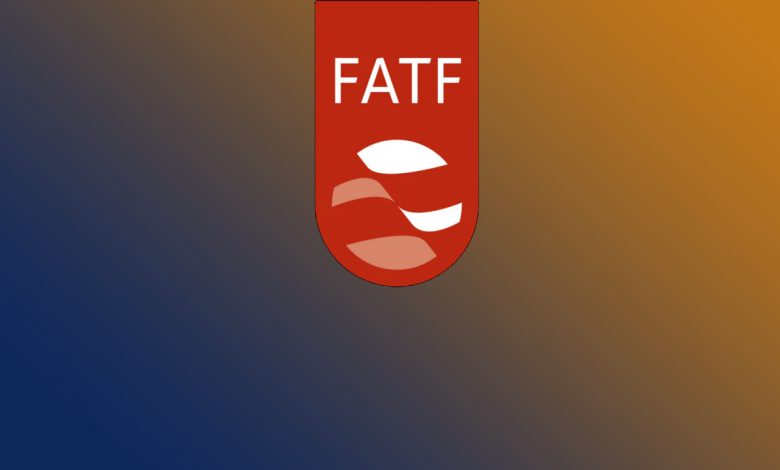Daily Current Affairs for UPSC
FATF Grey List

Topic- International Organizations [GS Paper-2]
Context- Pakistan has been removed from the Financial Action Task Force Grey List.
Key Highlights
- Four years after Pakistan was placed on the “grey list” and penalised with severe financial strictures by the Financial Action Task Force, Pakistan won a major reprieve, as the FATF agreed to remove Pakistan’s name from the list of countries under increased monitoring.
- The decision was taken at the end of the FATF’s plenary session, after a consensus decision of all 39 members, including India to accept the review of Pakistan’s efforts on strengthening its anti-money laundering and combating terror financing (AML/CFT) mechanisms.
- The decision has ensured that Pakistan aligns its laws to international laws on AML/CFT and pursues UNSC-banned terrorists, which led to the prosecution of a number of terror groups and leaders including the Lashkar-e-Taiba’s Hafiz Saeed, 26/11 handler Sajid Mir, commander Zaki Ur Rahman Lakhvi and others.
- According to the FATF, Pakistan had completed two action plans comprising a 34-point tasklist in the period since 2018.
- In between the period of 4 years, Pakistan has strengthened the effectiveness of its AML/CFT regime and addressed technical deficiencies to meet the commitments of its action plans regarding strategic deficiencies that the FATF identified in June 2018 and June 2021, the latter of which was completed in advance of the deadlines, encompassing 34 action items in total.
- Pakistan is, therefore, no longer subject to the FATF’s increased monitoring process.
- Whereas India’s other neighbour on the list, Myanmar was moved from the grey list to the “black list” and will face even more severe financial sanctions and an inability to procure IMF, World Bank and ADB loans.
Financial Action Task Force
- The Financial Action Task Force is an inter-governmental organisation that sets international standards that aims at preventing international financial crimes that aid terrorism.
- The body was established in July 1989 by a G-7 Summit in Paris, initially to examine and develop measures to combat money laundering.
- Currently the FATF comprises 37 member jurisdictions and two regional organizations i.e. European Commission and Gulf Cooperation Council, which represents most major financial centers in all parts of the globe.
- India has joined the FATF since 2010 and it is also a member of its regional partners, the Asia Pacific Group (APG) and the Eurasian Group (EAG).
- The Secretariat of FATF is situated at the Organisation for Economic Cooperation and Development (OECD) headquarters in Paris.
Directives of FATF
- After the 9/11 attacks, the FATF in October 2001 expanded its directives to incorporate efforts to combat terrorist financing.
- In April 2012, it included efforts to counter the financing of proliferation of weapons of mass destruction.
- The organisation has also developed the FATF Recommendations, or FATF Standards, which ensure a co-ordinated global response to prevent organised crime, corruption and terrorism.
- Over 200 administrations around the world have committed to the FATF Recommendations through the global network of nine FATF-Style Regional Bodies (FSRBs) and FATF memberships.
FATF Lists
Grey List
- Countries that support terror funding and money laundering are put in the FATF grey list.
- Grey list serves as a warning to the country that it may enter the blacklist.
Black List
- Countries that are known as Non-Cooperative Countries or Territories (NCCTs), are put in the blacklistand also these countries support terror funding and money laundering activities.
- The blacklist is revised regularly by the FATF, adding or deleting entries.
- Currently, Iran and Democratic People’s Republic of Korea (DPRK) are under High-risk Countries or black lists.
FATF Grey List
- Grey listing also known as the “increased monitoring list”, means FATF has placed a country under increased monitoring to check its actions on measures against money laundering and terrorism financing.
- As of October 2022, there are 22 countries on the FATF’s increased monitoring list as Pakistan has been removed from it recently, officially referred to as “jurisdictions with strategic deficiencies”.
Removal from the Grey List
- To be removed from the grey list, a jurisdiction has to fulfill the tasks recommended by the FATF, for instance, confiscating properties of individuals associated with terrorist groups.
- If the FATF is satisfied with the progress, then the country can be removed from the list.
- The FATF most recently took Pakistan and Zimbabwe, and before that Botswana and Mauritius, off the grey list.
- In the case of Pakistan, it first entered the list in 2008, left it, and then was on it from 2012 to 2015 and since 2018, it has not been removed from the list.
- The FATF had issued the 27-point action plan pertaining to curbing money laundering and terror financing after placing Pakistan on the ‘Grey List’ in June 2018. A parallel action plan was handed out by the FATF’s regional partner – the Asia Pacific Group (APG) – in 2019.
Impact of grey-listing on a country
- If a country is on the grey list, it indicates to the global financial and banking system about increased risks in transactions with the country in question.
- As the major financial institutions like the IMF and World Bank are affiliated with FATF as observers, a grey-listed country faces complications in accessing international lending instruments.
- For instance, USD 6 billion IMF loan contract from July 2019 that emphasized the need for Pakistan to comply with the FATF’s action.





.png)



